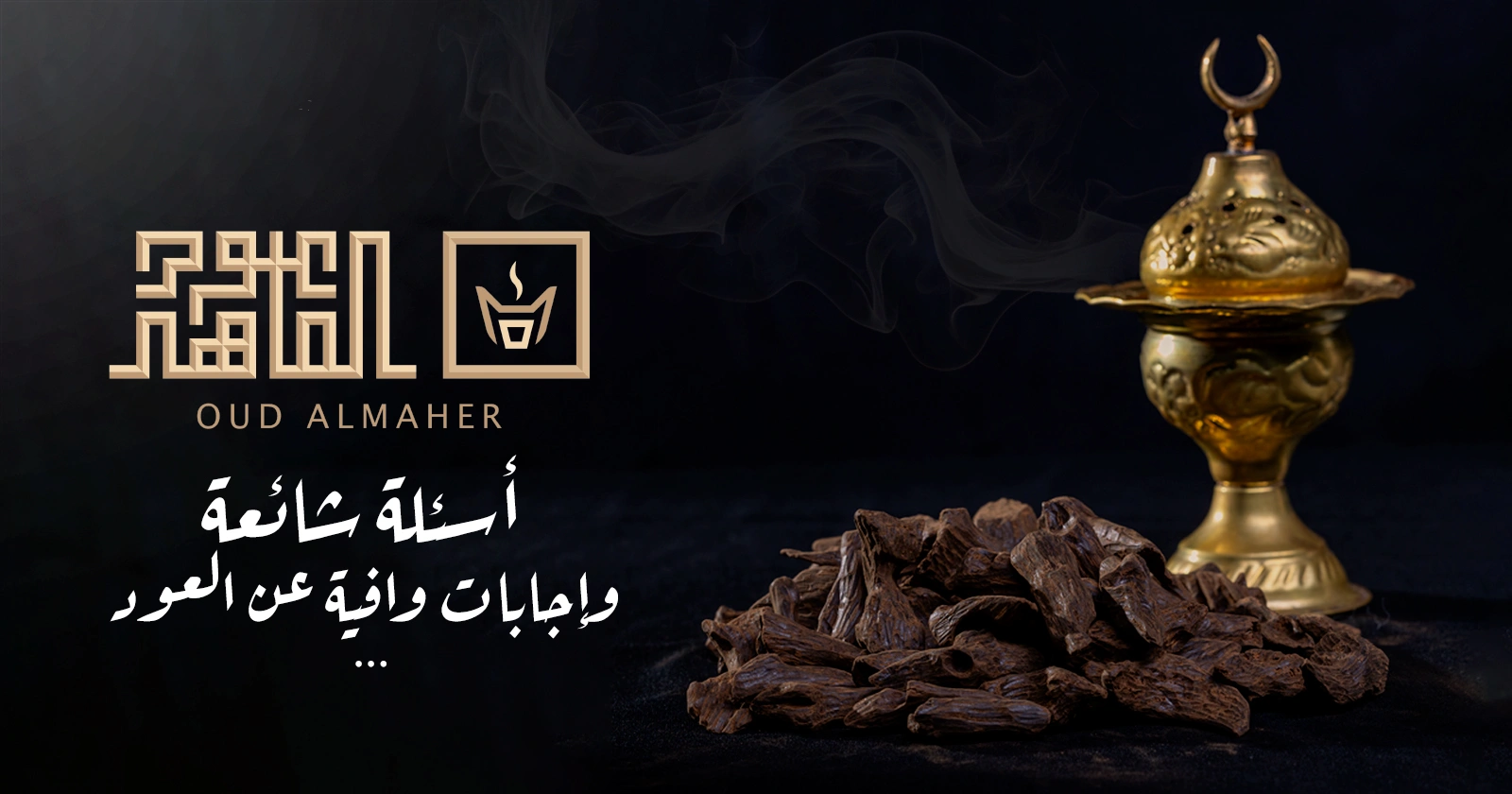
Blog
All You Need to Know About Oud: Frequently Asked Questions and Detailed Answers

What is Oud?
What is Oud? Oud, also known as agarwood, is one of the rarest and most luxurious natural substances in the world. oud comes from the heartwood of the Aquilaria tree, which produces a dark, fragrant resin when infected by a special type of fungus. This resin is what gives oud its deep, rich, and complex aroma.
- Forms of Oud: Available mainly as oud oil (distilled from the resinous wood) and oud wood (burned directly for incense).
- Cultural Value: Treasured for centuries across the Middle East, South Asia, and East Asia for luxury, spirituality, and traditional medicine.
- Fragrance Profile: Depending on origin, oud can smell woody, smoky, sweet, floral, or leathery.
- Rarity: Natural agarwood is scarce and difficult to harvest, making oud among the most expensive perfumes and incenses in the world.
What Are the Best Types of Oud Oil?
The best types of oud oil depend on its source, extraction method, and purity. Among the most luxurious and popular types are:
- Cambodian Oud Oil: Known for its deep, warm, and sweet aroma. It is a top choice among oud lovers in the Gulf region.
- Laosi Pakse Oud Oil: a high-end Laotian oud with distinguished aroma and depth.
- Brachin Oud Oil: one of the purest natural oud oils, extracted from Thailand’s original forests without chemical additives.
- Trad Siyufi Oud Oil: pure Thai oud known for refined woody depth and long-lasting qualities.
How to Identify Genuine Oud Oil?
How to Identify Genuine Oud Oil? To distinguish genuine oud oil, consider the following:
- Scent: Real oud oil has a rich, multi-layered natural aroma. Fake versions often smell flat and synthetic.
Texture: Original oud oil is thick and oily, unlike diluted versions that are watery. - Longevity: Genuine oud oil lasts long on skin or clothes.
- Experience: When applied, it leaves a soft oily residue and reacts with body heat to slowly release fragrance.
- Buy from a trusted source: Like reputable brands such as Oud Al-Maher to ensure authenticity.
How to Choose the Right Oud Oil?
How to Choose the Right Oud Oil? To select the perfect oud oil:
- Determine its use: Is it for daily wear or special occasions?
- Test the scent: Try it on your skin to see how it interacts with your body chemistry.
Trusted source: Purchase from well-known sellers to avoid fake or diluted oils. - Set a budget: Oud prices vary by rarity and quality.
How to Tell Good Oud Wood from Bad?
How to Tell Good Oud Wood from Bad? You can differentiate good from bad oud wood through:
- Burning smell: Good agarwood emits a rich, layered aroma. Poor quality may smell synthetic or faint.
- Smoke: Good oud wood releases thick, aromatic smoke that lingers.
- Color & Texture: High-quality oud is dark, dense, and may show resin veins.
- Testing: Burn a small piece to evaluate the scent and smoke.
What Are the Best Types of Oud Wood?
What Are the Best Types of Oud Wood? It depends on preference and use, but popular types include:
- Benkawi Oud Wood Chips — Offers aroma that’s more refined and balanced; good for exploring different oud wood characters without going too intense.
- Super Natural Maroki Oud Wood Chips — Pure, natural, less treated or enhanced, ideal for people preferring more authentic, wood-forward oud scents.
- Premium Enhanced Kalimantan Oud Wood Chips — Offers a rich, full smoke and bold presence. Ideal when you want a lasting, strong fragrance.
- Enhanced Maroki Turabi Oud Wood Chips — Maroki variant with enhancement that accentuates fragrance depth.
Which Country Produces the Best Oud?
Which Country Produces the Best Oud? Top-producing countries include:
- Cambodia: Famous for royal-quality oud.
- India: Known for elite oud oil.
- Indonesia: Home to the distinctive Kalimantan oud.
- Laos & Malaysia: Known for natural, high-quality agarwood.
What’s the Best Incense for Home Use?
For a warm and inviting atmosphere at home, oud wood remains one of the best incense options. At Oud Al-Maher, you’ll find a variety of unique selections that combine elegance with long-lasting diffusion:
- Enhanced Maroki Asqon Oud Wood Chips: a rare, mellow option with smooth notes ideal for a calmer setting.
- Premium Enhanced Maroki Oud Wood Chips (Jawaher): refined and luxurious, perfect for elevating family gatherings or welcoming special guests.
How to Choose the Right Incense?
How to Choose the Right Incense? To ensure a special incense experience, follow these tips:
- Define your purpose:
- For relaxation: Choose incense with calming ingredients like oud + lavender or rose.
- For guests/special events: Go for premium incense like enhanced Moroccan or maamoul with oud.
- Daily use: Opt for lighter scents like Malaysian or Kalimantan oud.
- Check wood quality:
- Natural oud incense lasts longer and smells richer than synthetic options.
- Natural oud incense lasts longer and smells richer than synthetic options.
- Pick your preferred fragrance:
- Try samples to discover whether you like sweet, warm, or floral notes.
- Try samples to discover whether you like sweet, warm, or floral notes.
- Choose based on your burner type:
- Electric burners need fine pieces.
- Traditional burners work better with larger chunks.
- Buy from a reliable source:
- Trusted brands like Oud Al-Maher offer pure products without artificial additives.
- Trusted brands like Oud Al-Maher offer pure products without artificial additives.
Best Incense for Relaxation?
Top relaxing options from Oud Al-Maher include:
- Indian Assam Oud Wood Chips – Known for their deep oriental floral-woody aroma, they create a calming and soothing atmosphere, perfect for unwinding.
- Vietnamese Oud Wood Slivers (Triple Super) – Premium grade incense with a refined, soft diffusion ideal for meditation and mental clarity.
- Enhanced Maroki Oud Wood Chips – Gentle, balanced fragrance that spreads smoothly in the room, making it excellent for relaxation.
- Oud Al-Bayt (Home Incense) – Specially crafted for home use, it provides a warm and comforting ambiance that promotes peace and relaxation.
- Enhanced Kalimantan Oud Wood Chips – Rich, grounding scent with thick aromatic smoke that helps release stress and elevate mood.
Extra Tips:
- Use electric burners for heat control and fragrance purity.
- Dim lighting enhances the relaxing mood.
Choose quiet times, like before sleep or while reading.
How to Make Incense Last Longer at Home?
- Use a suitable burner for even scent distribution.
Choose high-quality incense: Natural oud lasts longer. - Close windows and doors: Keeps the scent concentrated.
What Are the Most Expensive Types of Oud?
What Are the Most Expensive Types of Oud? The priciest types include:
- Royal Cambodian Oud Oil: Rare with a rich aroma.
- Royal Indian Oud Oil: Known for high quality and longevity.
- Rare Laosi Oud Oil: Highly sought after for its uniqueness.
What Tree Does Oud Come From?
Oud comes from the Agarwood Tree, scientifically known as Aquilaria.
- Belongs to the Thymelaeaceae family.
- Found mainly in South and Southeast Asia—India, Cambodia, Laos, Malaysia, and Indonesia.
- Forms resin (oud) when the tree is infected by a specific fungus.
- Rare in nature, making oud products highly valuable.
Does Oud Oil Expire?
Does Oud Oil Expire? Not exactly—oud oil doesn’t spoil if stored properly. In fact, some types improve with age.
Storage Tips:
- Avoid direct sunlight.
- Store in a cool, dark place like a drawer.
- Seal the bottle tightly to protect from air and dust.
- Use dark glass containers to shield from light.
If stored improperly, oud oil might slightly change in scent or consistency, but it rarely goes bad.
How to Tell Natural from Synthetic Oud?
How to Tell Natural from Synthetic Oud? Here are several ways to tell:
- Scent:
- Natural: Deep, evolving aroma with complex layers.
- Synthetic: Fast-fading, artificial, and often harsh.
- Color & Texture:
- Natural: Dark, heavy, shows natural veins.
- Synthetic: Uniform color, may look glossy and feel light or chemically treated.
- Weight:
- Natural: Dense and heavy.
- Synthetic: Lighter due to artificial materials.
- Burning Behavior:
- Natural: Burns slowly, releases thick fragrant smoke.
- Synthetic: Burns quickly, may emit artificial or faint scent.
- Price:
- Natural: Expensive due to rarity and harvesting process.
- Synthetic: Cheaper, mass-produced.
What’s the Best Oud for Burning?
Top choices include:
- King Tiger Oud Wood Chips: Deep, woody scent perfect for special events.
- Indian Oud: Rich, traditional Eastern aroma.
- Enhanced Kalimantan Oud: Thick smoke and strong presence—great for large spaces.
What’s the Best Type of Incense to Burn at Home?
Look for incense that combines lasting scent with pleasant diffusion:
- Enhanced Maroki Al-Reef Oud Wood Chips: Ideal for everyday use.
- Maamoul with Oud & Rose: Luxurious and long-lasting fragrance.

